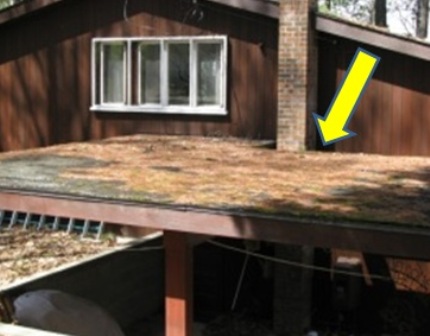Cottage owners can protect property from next spring’s potential wildfire damage now
The MSU Extension Firewise program offers tips on how cottage owners can make their property more wildfire resistant as they work to winterize it.
Michigan State University Extension Firewise educators offers tips to cottage owners on how to make their property wildfire resistant as they work to winterize it this fall.
“With Labor Day gone and autumn colors looming, many people who own cottages in northern Michigan are preparing to close down their up-north getaways after another season of vacation and recreational use,” said MSU Extension Educator Russell Kidd. “Typically, many cottage owners travel north for one final weekend to work on their cottages in preparation for the long winter season ahead. As docks are pulled off the lake, outdoor furniture stowed away, boats are winterized and fallen leaves and needles are raked up around the cottage, property owners should know that this is a perfect time to survey their buildings and grounds for wildfire danger.”
Kidd explained that autumn is the time of year when leaves and needles falling off trees around seasonal homes and cottages begin to accumulate in the eaves, gutters and other areas along the roofs of buildings. In addition, a sizeable amount of branches, needles and other debris can also accumulate on the ground or become lodged within trees. If not raked up and removed, they will pose a wildfire risk to personal property come next spring. “Cottage owners can get a head start on preventing wildfire damage by keeping their landscape around their seasonal homes ‘lean, green and clean,’” said Kidd.

A common scene in
northern Michigan in autumn. These fallen pine needles caused by the annual
shedding of older needles pose a serious fire hazard to this cottage –
especially when spring wildfire season starts next April. Cottage owners should
be diligent to remove these needles and other vegetative debris before next
spring. (Caution: exercise safety when working on or around rooftops!)
MSU Extension Firewise educators offer homeowners the following tips on wildfire prevention. Following these steps helps property owners reduce their vulnerability from the threat of wildfire:
- Fall season is a good time to
prune trees.
Prune all trees, especially conifers, so that the lowest limbs are 6 to 10 feet from the ground. Be especially alert for any broken branches that are leaning against the ground and can act as a “ladder” for wildfire flames to burn up into tree crowns. Wildfires that progress into the crowns of trees create more dangerous wildfires to control and allow fires to spread more quickly. - Remove dried leaves, pine
needles, broken twigs and other dead vegetation from roof tops and gutters.
Pay special attention to “valleys” created by two sloping sides of a roof coming together. These areas are natural concentration points for windblown debris. This practice is critical to keeping wind-blown embers from starting a new fire or hotspot on your own property. - Complete unfinished landscape projects. Within 3 to 5 feet of the home, use non-flammable landscaping materials such as rock, pavers, pea stone and other types of gravel, annuals and high-moisture perennial plants that are more resistant to fire. This creates a natural firebreak that can keep the flames from reaching the walls of your cottage.
- Keep firewood stacks and propane tanks at least 30 feet from the walls of a building. Firewood is flammable and should not be stored right up against the side of a building. Remote, liquid fuel from propane tanks is flammable if it escapes (i.e. the pressure valve malfunctions) and so creating distance between structures and propane tanks is a wise practice.
For more information on protecting your home from wildfire, visit the MSU Extension Firewise webpage or visit the national Firewise website.
In addition, Michigan residents can also purchase extension bulletin E2831, “Protecting Your Michigan Home from Wildfire” from the MSU Extension Bookstore website.



 Print
Print Email
Email




